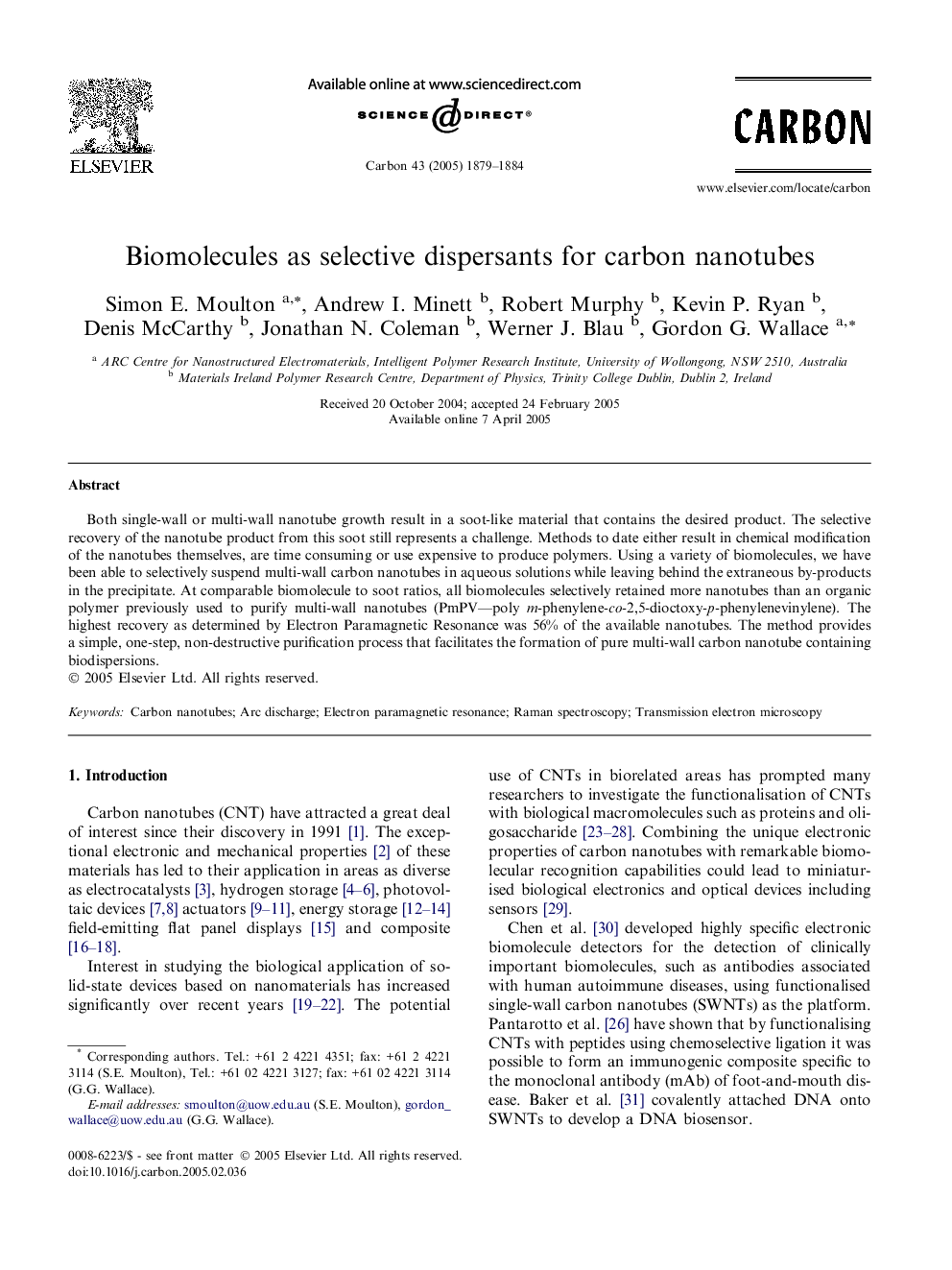| Article ID | Journal | Published Year | Pages | File Type |
|---|---|---|---|---|
| 1420134 | Carbon | 2005 | 6 Pages |
Both single-wall or multi-wall nanotube growth result in a soot-like material that contains the desired product. The selective recovery of the nanotube product from this soot still represents a challenge. Methods to date either result in chemical modification of the nanotubes themselves, are time consuming or use expensive to produce polymers. Using a variety of biomolecules, we have been able to selectively suspend multi-wall carbon nanotubes in aqueous solutions while leaving behind the extraneous by-products in the precipitate. At comparable biomolecule to soot ratios, all biomolecules selectively retained more nanotubes than an organic polymer previously used to purify multi-wall nanotubes (PmPV—poly m-phenylene-co-2,5-dioctoxy-p-phenylenevinylene). The highest recovery as determined by Electron Paramagnetic Resonance was 56% of the available nanotubes. The method provides a simple, one-step, non-destructive purification process that facilitates the formation of pure multi-wall carbon nanotube containing biodispersions.
